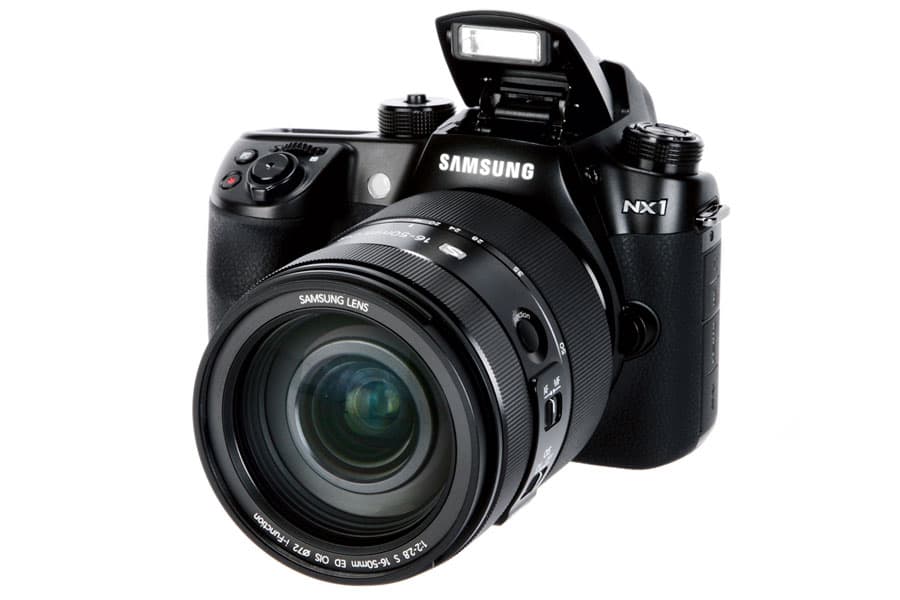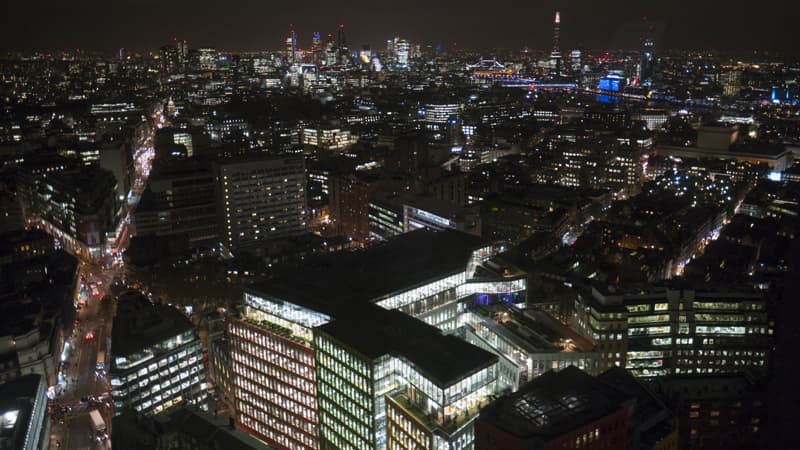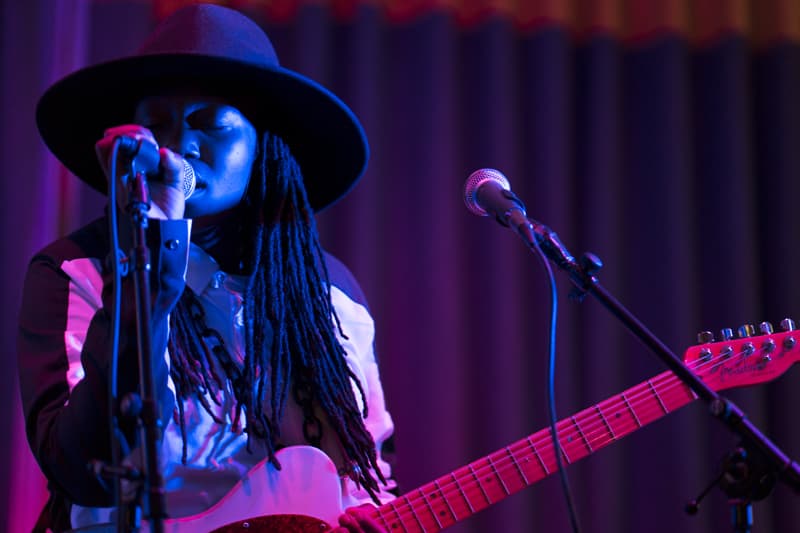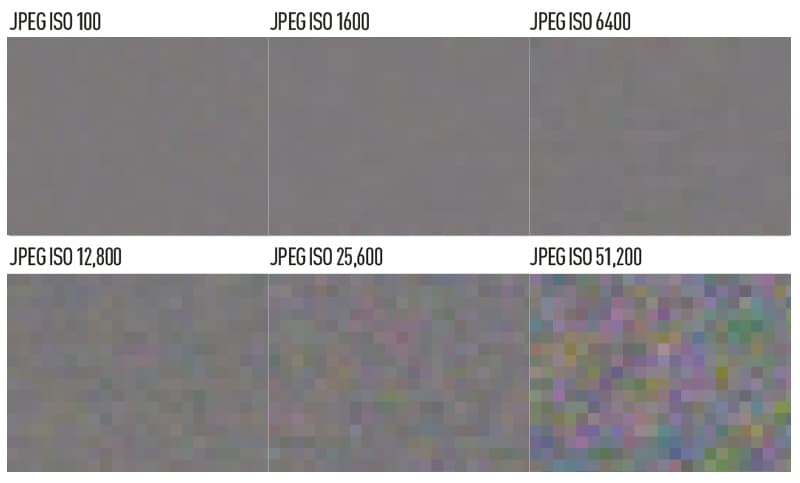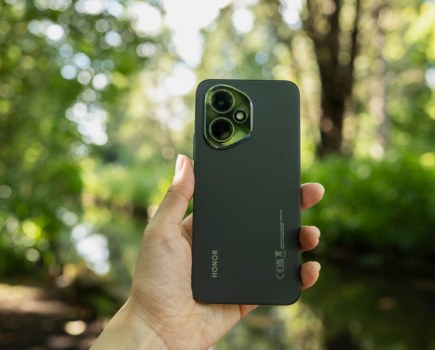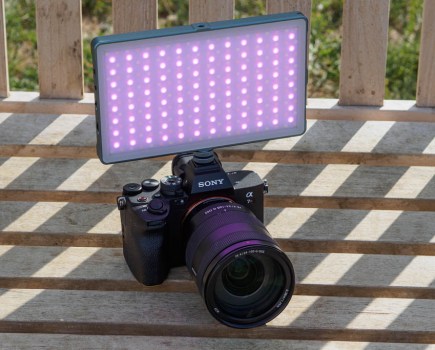Watch our Samsung NX1 video review
Samsung NX1 Review – Introduction
At a Glance
- 28.2-million-pixel BSI APS-C sensor
- 4K video recording
- 15fps burst mode with continuous AF
- Hybrid AF with 205 points
- Magnesium alloy frame
- 3in, 1.04-million-dot LCD touchscreen
- Price £1,299 (body only)
Andy Westlake, AP’s technical editor, described the Samsung NX1 as one of the stars of the show at Photokina 2014, and after handling it myself I agree that on first impressions it appears to be a very exciting camera indeed.
The past 12 months have seen the introduction of some fantastic camera models in both the DSLR and compact system camera categories, including the Panasonic Lumix DMC-GH4, Sony’s Alpha 5100 and 6000, Fujifilm’s X-T1 and Olympus’s OM-D E-M10. Given this competition, Samsung must do something special to save itself from slipping further behind after failing to make a significant impact on the enthusiast camera market with the NX20 in 2012, and then the Android-powered NX smart camera hybrid the following year.
In the NX1, Samsung has shied away from trying to bridge the smartphone/camera divide and has instead focused on trying to deliver the very best in image-capturing technology – so this is a camera with some truly attention-grabbing specs.
Samsung NX 1 Review – Features
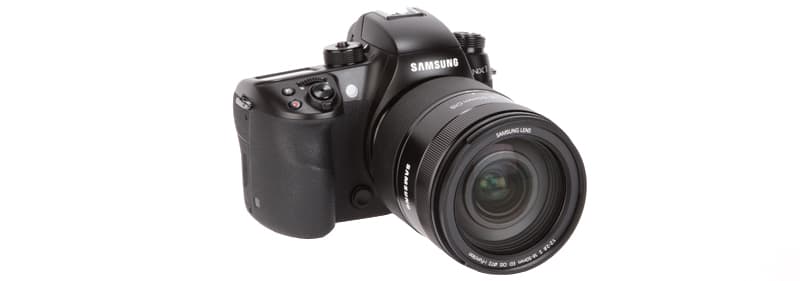
Samsung has developed the world’s first-ever APS-C-sized, backside illuminated (BSI) CMOS sensor, meaning it should be able to capture more light and deliver better low-light performance than traditional CMOS sensors found in other APS-C cameras. Previously, the largest sensors to feature BSI sensor technology were the 1in-type units found in cameras such as Canon’s PowerShot G7 X and the Sony Cyber-shot DSC-RX100 series, so it’s a noteworthy achievement for Samsung to have created the 28.2-million-pixel, BSI, CMOS APS-C sensor that sits at the heart of the NX1. As well as being the most innovative, it’s the highest-resolution APS-C camera currently on the market, and Samsung has decided not to include an anti-aliasing filter.
To further boost the NX1’s low-light capabilities, the camera also has a native ISO sensitivity range of 100-25,600, extendable to 51,200. Samsung’s new Drime V multi-core processor gets its first run out in the NX1, and according to the manufacturer, it’s almost 3x faster than the Drime IV. The extra processing power means the NX1 is capable of shooting full 28.2-million-pixel-resolution images at up to 15 frames per second with continuous autofocus, which is significantly faster than even the flagship press/sports DSLRs from Canon and Nikon. If that’s not impressive enough, how about the fact that the NX1 uses a hybrid autofocus system with 205 phase-detection AF points, 209 contrast points and up to 153 cross-type detection sites covering almost 100% of the frame?
 The Drime V processor is UHS-II and UHS-I SD-card-compatible and its processing speed opens up the possibility for DCI True 4K (4096 x 2160-pixel) 24p video recording internally, as well as 4K UHD and full HD video. Advanced filmmakers will also be pleased to learn that the NX1 uses easy-to-work-with H.264 compression and is capable of outputting a 4:2:2 8-bit 4K signal via HDMI cable to an external device.
The Drime V processor is UHS-II and UHS-I SD-card-compatible and its processing speed opens up the possibility for DCI True 4K (4096 x 2160-pixel) 24p video recording internally, as well as 4K UHD and full HD video. Advanced filmmakers will also be pleased to learn that the NX1 uses easy-to-work-with H.264 compression and is capable of outputting a 4:2:2 8-bit 4K signal via HDMI cable to an external device.
Although we’re still a little while away from 4K recording becoming the standard for video and display, Samsung has made it possible to play back 4K footage through HDMI 1.4 or 2.0, or wirelessly transfer UHD-quality video to its own UHD monitor. However, I do expect 4K displays to become a lot more common over the next year.
Another intriguing wireless capability of the NX1 is live streaming of full HD footage from the camera. There will be limited uses for such a feature among the general consumer population, but it is a feature that may be attractive in events and other professional settings. Beyond UHD playback, 4K video recording can have some benefits for stills photography as well, as we demonstrated in AP 20 September when a still image taken from a 4K recording was on the front cover of the magazine.
Samsung NX1 Review – Build and Handling
I genuinely like the look and feel of this camera, with Samsung taking a mostly clean, no-nonsense approach to its design. The NX1 makes a solid first impression in the hand, with its perfectly ergonomic grip providing a firm holding experience and well-placed control buttons that are easy to operate while shooting. The exposure mode dial has the usual PASM settings, an auto mode, a smart mode and two custom options.
 The rest of the camera looks streamlined and designed for simplicity. There are, however, some decent customisation
The rest of the camera looks streamlined and designed for simplicity. There are, however, some decent customisation
options with the controls we do have that make it possible to configure just about every regularly used feature to the buttons at your fingertips. Plus, there’s the ability to quickly make settings adjustments using the quick menu and touchscreen.
In short, Samsung has made every attempt to make this camera work for as many conceivable personal preferences as possible, and it’s done so without completely covering the camera in buttons. My only issue with the controls is the minuscule size of the four secondary control buttons on the left shoulder. Samsung could, and should, have adopted Nikon’s approach, providing larger, more accessible four-way buttons that cover the top of the shoulder dial, rather than the stylised thin slithers that they are. Otherwise, this is an easy camera to configure and shoot with, and is suitable for both experienced photographers and newcomers alike.

For a compact system camera, though, the NX1 isn’t particularly compact. Measuring 138.5 x 102.3 x 65.8mm and weighing 635g, it’s comparable in size to the Nikon D7100 DSLR, which also has a magnesium-alloy frame, although it does weigh an extra 130g. However, the high-quality build of Samsung’s Premium S lenses will add to the heft of using the NX1. The 16-50mm f/2-2.8 Premium S lens will, for example, increase the weight of the camera by 622g. I don’t want any of this to sound like a complaint – I just think it’s important to highlight that the NX1, although classified as a compact system camera, is relatively heavy and DSLR-like in size.
The NX1’s electronic viewfinder is one of the best we’ve seen, with a 2.36-million-dot XGA OLED display and an almost imperceptible lag of 0.005sec. Given the lack of delay, and its ability to show advanced shooting information and assistance such as manual focus peaking with up to 5x magnification, I dare say this EVF is better than more traditional optical units typically found in DSLRs.
Using the NX1’s 3in, 1.04-million-dot FVGA Super AMOLED touchscreen display is also a pleasure, with colours and detail rendered superbly while composing frames. Using the screen to adjust settings is quick and responsive, with everything laid out in an attractive and uncluttered user interface. It’s also possible to focus and shoot by touching the screen. Both are highly useful capabilities, particularly when using the LCD’s tilting function.
Samsung NX 1 Review – Performance
The first thing you do when you get your hands on a camera capable of rapid-fire continuous shooting is, of course, to point it at anything and hold down the shutter release until it slows up. Impressively, the Samsung NX1 can fire off full resolution JPEGs at 15 frames per second for about 5secs with continuous AF, which makes it incredibly hard to miss a shot during more practical scenarios. In raw, the buffer drops to 20 frames.
After satisfying the irresistible urge to play machine gun with my camera, the second thing I wanted to see the NX1 do was capture shots in low light, given that it has a the world’s largest backside illuminated sensor. The camera itself doesn’t feature image stabilisation, although there are lenses in Samsung’s line-up that do, such as the 16-50mm f/3.5-5.6 Power Zoom and its premium relation, the aforementioned 16-50mm f/2-2.8 Premium S. Armed with the 16-50mm f/2-2.8 Premium S, I was able to shoot handheld in low light and test out the practicalities of capturing night-time cityscapes.
I took a range of images from the same vantage point using shutter speeds as low as 1/25sec. I probably could have gone a little bit lower in hindsight, but I noticed an interesting quirk when seeing how the camera dealt with noise at different ISO settings. At ISO 1600, JPEGs suffer from smoothing, which removes valuable detail information. Thankfully, though, it appears to be more sophisticated than the noise-handling efforts of previous Samsung cameras I’ve used. However, at ISO 6400 the additional noise seemed to help to redefine some of the detail lost in JPEGs taken at lower ISO sensitivity settings, producing images that were sharper and truer to the night-time scene in front of me. The NX1 shows definite improvement in this area over its predecessors, and as a result I would be happy to print from JPEGs taken straight from the camera at sensitivities up to perhaps ISO 6400. However, shooting raw is definitely advised in low-light and high-contrast situations as the camera’s jpeg processing can struggle with clipped highlights and crunched shadows. When shooting raw, you can ensure that vital image data is captured.
Some compact system cameras have a tendency to oversharpen images in order to try to feign image detail, but the NX1 seems to take a more measured approach than we’ve come to expect from previous Samsung models. Straight out of the camera, JPEGs show a good level of detail without too much sharpening at all. Colour and white balance are as good as we expected and faithful to the scene in most instances. However, when faced with a lot of red tones, the camera’s processing system leaps at them when left to its own devices in auto white balance, producing a pronounced colour cast.
Samsung NX 1 Review – Autofocus
The NX1 features Samsung’s hybrid AF III system. AF III is capable of AF sensitivity in lighting conditions as challenging as -4EV, and in practice it performed well. Provided I was using a fast lens, I didn’t experience the camera hunting continuously for focus in low light, and I was impressed by the speed with which it managed to hone in on focal points. In particularly low-light scenarios, the camera is equipped with a bright green pattern AF assist beam with a range of up to 15 metres, which works in almost total darkness.
According to Samsung, the NX1 is capable of focusing in as little as 0.055sec in ideal conditions, making it one of the fastest cameras currently on the market. When combined with the right lens, the NX1 is blisteringly fast, latching onto points of interest wherever they fall in the frame. If AF-on is held or the shutter is half-pressed, it does a good job of sticking with a subject and maintaining focus. I typically shoot with single point AF in the centre of my frame, but multi-area AF with the camera’s sophisticated hybrid AF system also works very well, particularly in action scenarios. Face detection AF and self-portrait modes are also available.
Touch focusing is just as responsive and works very well when using the LCD screen at otherwise awkward shooting angles. I like the fact that Samsung has introduced some of the touch-photography features available in a number of smartphones, such as the ability to touch two different areas of the screen to achieve separate focusing and exposure readings.
Samsung NX 1 Review – Image Quality

Showing off the dynamic range performance of the Samsung NX1, single image processed in Camera RAW to adjust the highlights and shadows. No colour adjustments made. White Balance on Auto
With its 28-million-pixel, backside illuminated sensor, the NX1 offers some of the very best image quality we’ve seen from an APS-C camera, particularly at low ISOs. With no optical low-pass filter to sap the sharpness, it offers exceptional levels of detail, and while it’s not dramatically ahead of its rivals with 24-million-pixel sensors, it’s still probably the most detail we’ve seen from an APS-C-sized sensor.
Increasing the ISO naturally results in more noise, but the NX1 still compares quite well with other APS-C cameras, offering perfectly usable images at sensitivities up to about ISO 1600 before noise starts to have a serious impact. The next couple of settings – ISO 3200 and 6400 – are still quite acceptable, but the highest ISOs start to look very noisy indeed and should only be used when there’s no other option. In fact, ISO 51,200 is barely acceptable at all, but this is pretty much standard for an APS-C camera.
Dynamic range is very creditable at low ISOs, and it’s possible to pull up a good amount of shadow detail without running into huge problems with noise. As usual, it decreases at higher ISOs, and shadow detail starts to deteriorate visibly at ISO 3200. Overall, Samsung has done an impressive job with the NX1’s new sensor.
Resolution

This 3D graph illustrates the shift from the reference colour to the photographed chart: the higher the peak, the greater the shift from the original. In the default JPEG colour setting, the NX1 delivers bright and strongly saturated colours, giving a fairly punchy but still quite natural-looking rendition. Contrast is relatively high in the highlight regions, meaning that the paler tones in this test are rendered a bit lighter compared to other cameras. Colour settings can be adjusted in the camera’s Picture Wizard menu, with modes such as Vivid and Portrait on offer.
Dynamic range
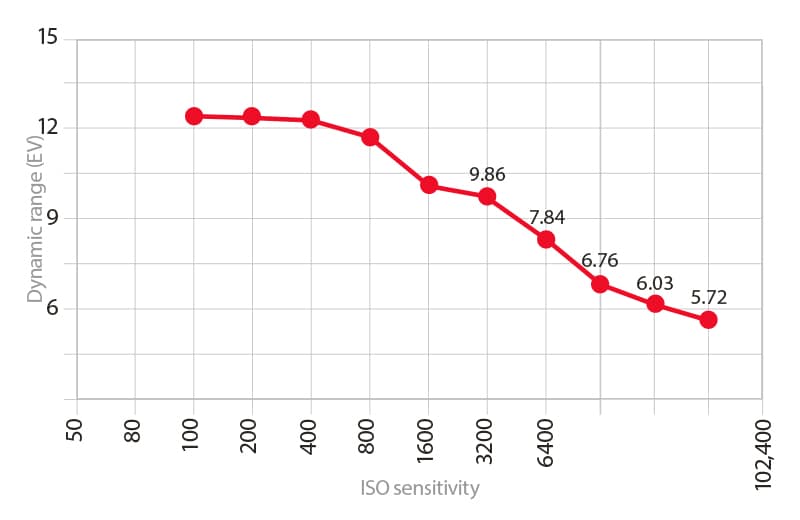
Despite its high pixel count, the NX1’s sensor shows excellent dynamic range, presumably thanks to its backside-illuminated design. Our Applied Imaging tests show an impressively high dynamic range of 12.6EV at ISO 100, and this holds up well at lower ISOs. But it starts to fall off quite quickly past ISO 1600, indicating that shadow regions in particular will become increasingly noisy. Sensitivities of ISO 12,800 and higher offer distinctly low dynamic range, so they won’t be very usable.
Colour
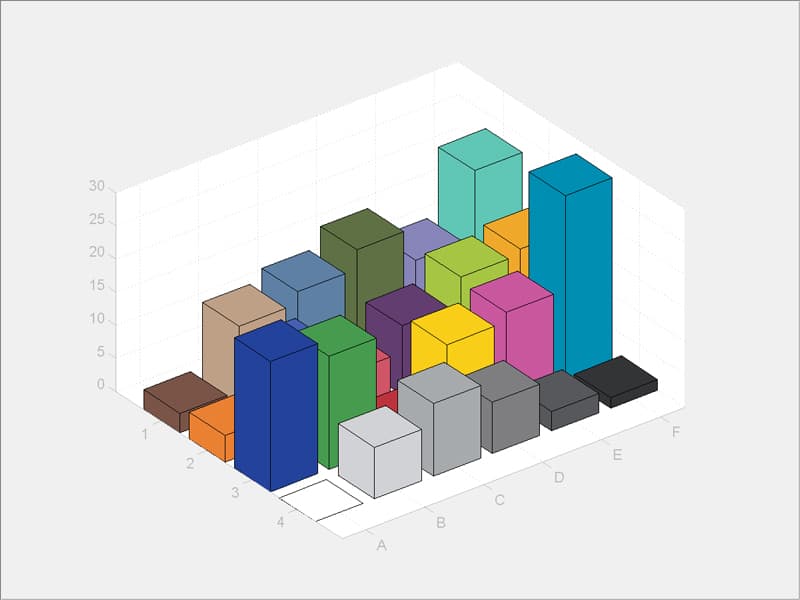
This 3D graph illustrates the shift from the reference colour to the photographed chart: the higher the peak, the greater the shift from the original. In the default JPEG colour setting, the NX1 delivers bright and strongly saturated colours, giving a fairly punchy but still quite natural-looking rendition. Contrast is relatively high in the highlight regions, meaning that the paler tones in this test are rendered a bit lighter compared to other cameras. Colour settings can be adjusted in the camera’s Picture Wizard menu, with modes such as Vivid and Portrait on offer.
Noise

The images above are printed at a resolution of 300ppi, reflecting a high-quality print. At low ISOs the NX1 delivers impressively clean, detailed images that match or surpass any other APS-C camera we’ve tested. Noise creeps in, and the finest detail visibly starts to suffer, at around ISO 1600. Things then go downhill quite quickly, and while ISO 3200 and 6400 are quite usable for less-critical applications, sensitivities of ISO 12800 and higher are marred by high levels of chroma noise.
Adobe Camera Raw does a vastly better job of dealing with high ISO noise than the camera’s JPEG processing, and gives much more usable results at ISO 3200 and higher. Even ISO 12,800 isn’t too bad, and carefully processed ISO 25,600 could be acceptable for small output. However, ISO 51,200 is still probably a step too far.
The grey-card images above are JPEG files shot with the NX1’s default noise-reduction and colour settings applied. The images are printed at 300ppi to reflect the noise that would be experienced when printing at high quality. The NX1’s files are extremely clean at ISO 100, and while luminance noise increases as the sensitivity is turned up, images remain pretty clean-looking in print up to ISO 1600 at least. Chroma noise becomes quite obvious at ISO 6400, giving visible colour blotching, and then increases dramatically at higher ISOs. The top two sensitivities are very noisy indeed.
Samsung NX 1 Review – Verdict
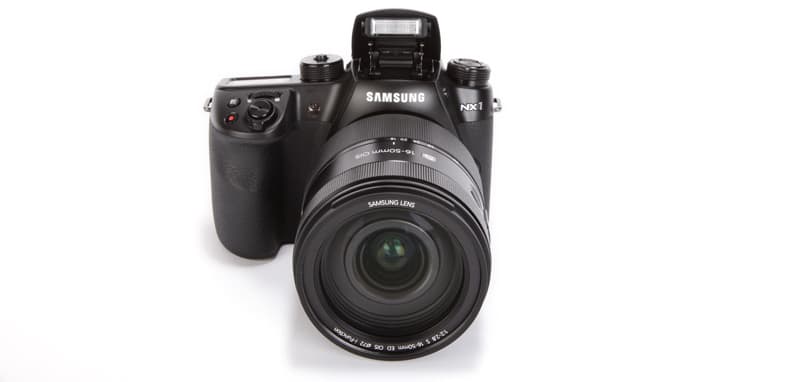 Samsung is a brand known for its innovation. However, despite swallowing up television, smartphone and tablet market share, the company has had a much tougher time trying to make a significant impact on the camera world, at least beyond small digital compacts. This is partly because Samsung’s cameras have simply not been good enough in the face of direct competition. However, I also attribute a large part of the challenge the company faces, at least in the UK and Europe, to the fact that the Samsung brand hasn’t ever produced a camera that positions itself in line with
Samsung is a brand known for its innovation. However, despite swallowing up television, smartphone and tablet market share, the company has had a much tougher time trying to make a significant impact on the camera world, at least beyond small digital compacts. This is partly because Samsung’s cameras have simply not been good enough in the face of direct competition. However, I also attribute a large part of the challenge the company faces, at least in the UK and Europe, to the fact that the Samsung brand hasn’t ever produced a camera that positions itself in line with
the requirements of serious enthusiast and professional photographers – until now.
The Samsung NX1 is highly promising. It’s a true hybrid camera that is well connected through some of the fastest ports and wireless technology currently available, while its 28.2-million-pixel BSI CMOS APS-C-sized sensor sets a new standard for APS-C, with resolution resolving performance comparable to the Nikon D810. Of course, the NX1 and D810 aren’t directly comparable, given the difference in crop factor and resolution, but in our resolution chart tests the NX1 managed to resolve around 3800l/ph – which is almost as good as the D810 on a pixel level. When we received the invitation to the NX1 launch announcement we were told to expect something special, and I must say that after using the NX1 for myself, I’m inclined to agree.

